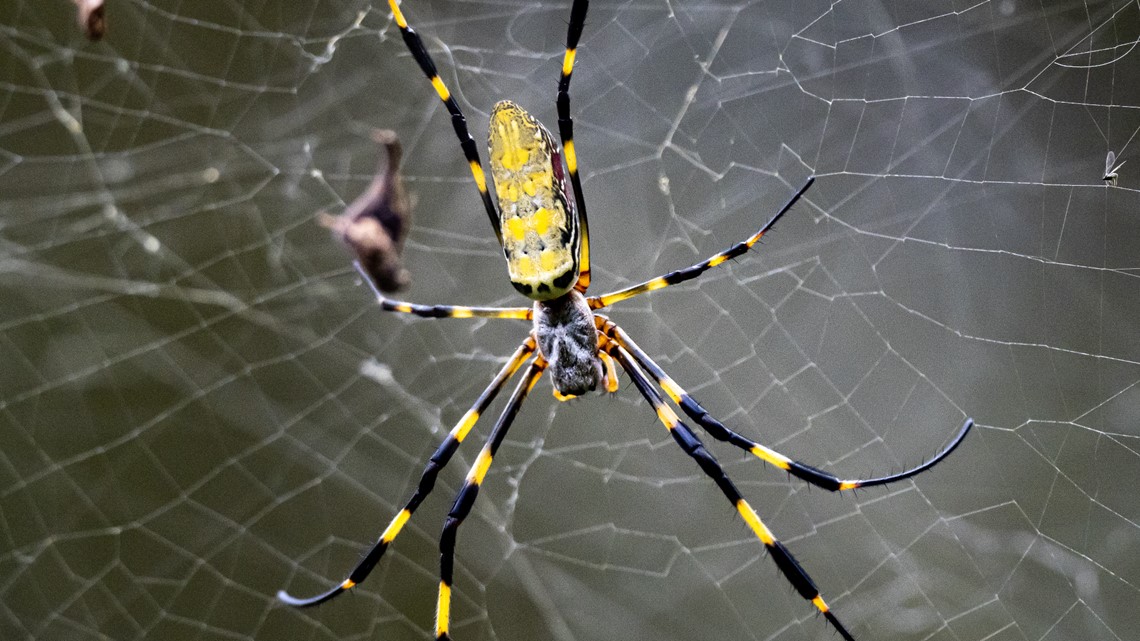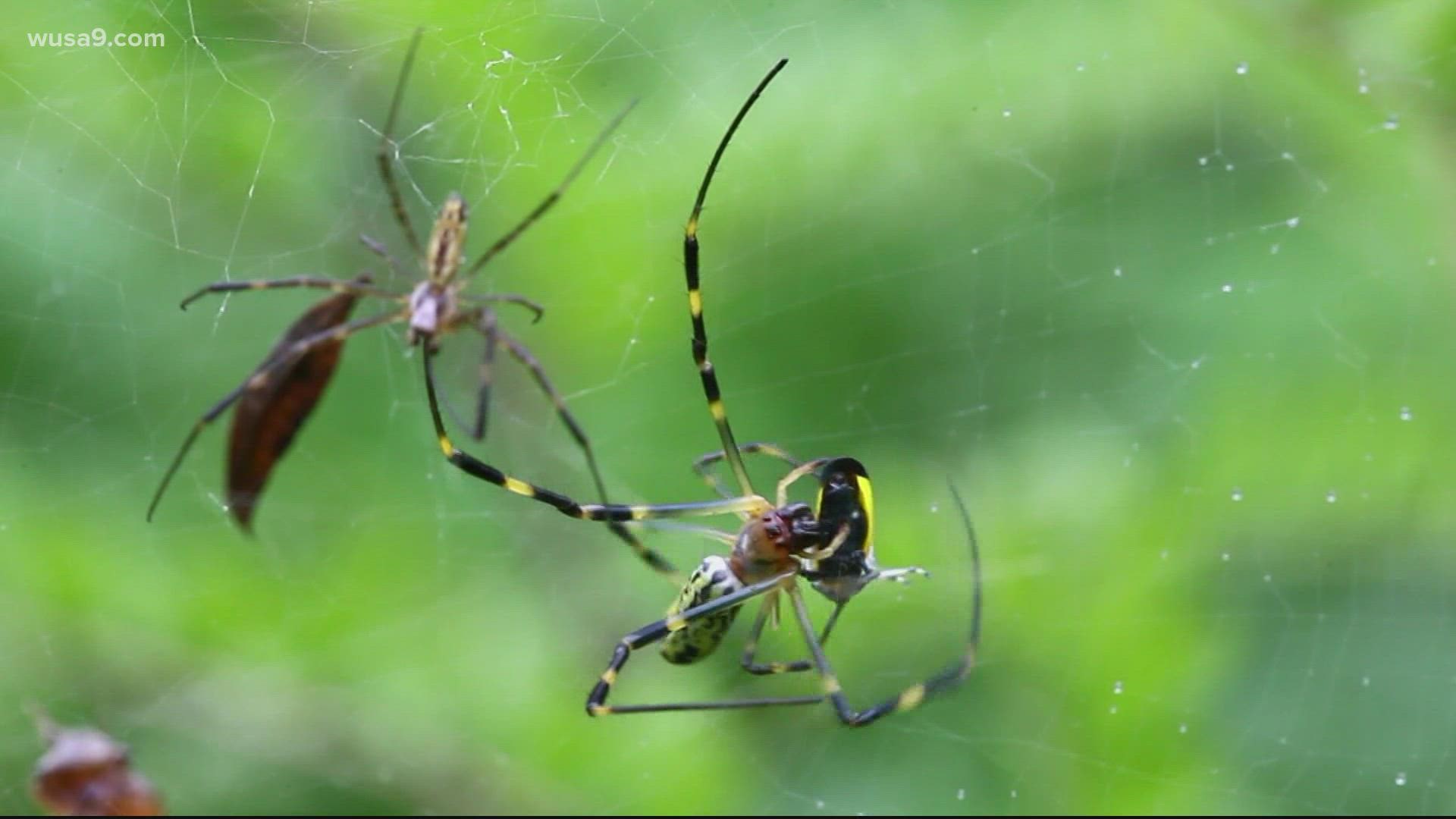WASHINGTON — The Joro spider's golden webs took over yards all over north Georgia in 2021, and now some DMV residents could be next.
Since its emergence down south, the spiders — which originated in Japan — have been spotted in South Carolina. Entomologists expect it to spread throughout the Southeast through its method of weaving web-parachutes to get around on gusts of wind.
WUSA9 spoke to an expert about what to know about the bright crawlers and their cobwebs before they land.
First of all, the spiders are harmless. They won't hurt you, your pets or your lawn — based on early data. Their fangs aren't even big enough to puncture human skin.
The environmental impact of Joro spiders in the U.S. isn't completely clear yet, however some scientists believe they are benign.
"The science is showing that they might actually be positive because they are readily willing to consume other invasive species like the brown marmorated stink bug, potentially the spotted lanternfly," said Dr. Floyd Shockley, collections manager at the Smithsonian National Museum of Natural History's Department of Entomology.
So, are they even coming to the DMV? Shockley says "absolutely," they are on their way. However, it will be some time in the future. He said he'll be surprised if Joro spiders show up any time in 2022; spring 2023 is more likely. Parachuting takes time.
They won't be as ubiquitous as the cicadas were, however. Like Brood X, they will mostly stick to more nature-filled areas, sparing most of the District to instead settle in spots across Virginia and Maryland.


When they do appear, they aren't house spiders, Shockley assured. Normally, they'll be in your garden and their webs can range from one meter to up to ten feet.
Unique qualities of the Joro spider include its colorful body that often showcases yellow, blue, or red markings and measures three inches across with its legs fully extended.
They also have an unusually high cold tolerance and metabolism, as well as a 77% higher heart rate. They can survive brief freezes that often kill off their relatives, one new study found.
And if you think the spider looks a little creepy - just know people have been thinking the same for years across the world, hence the common name's origins. Derived from the word Jorōgumo, the name refers to a spider from Japanese folklore that can shapeshift into a beautiful woman who lures, captures and consumes men, Shockley shared.
"If you get more than one in the backyard, it could be pretty easy to really fill up that backyard with webs," he said. "But these guys are pretty gentle."

